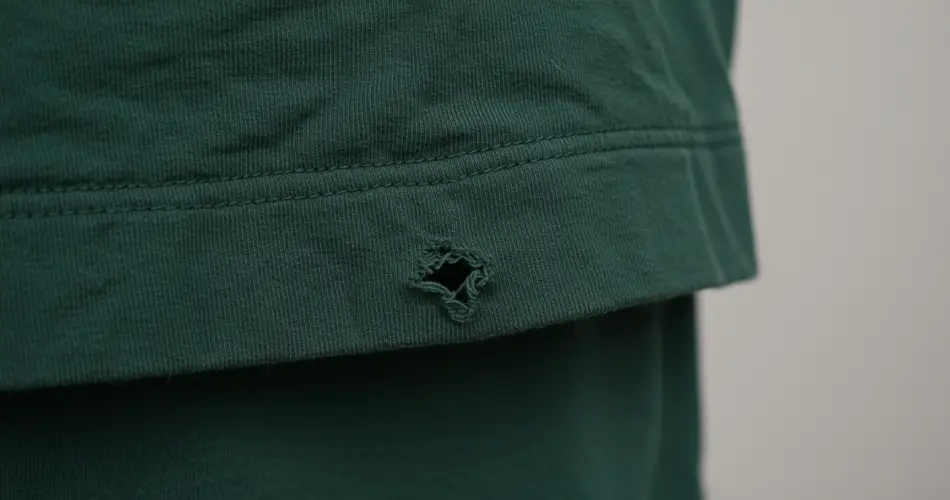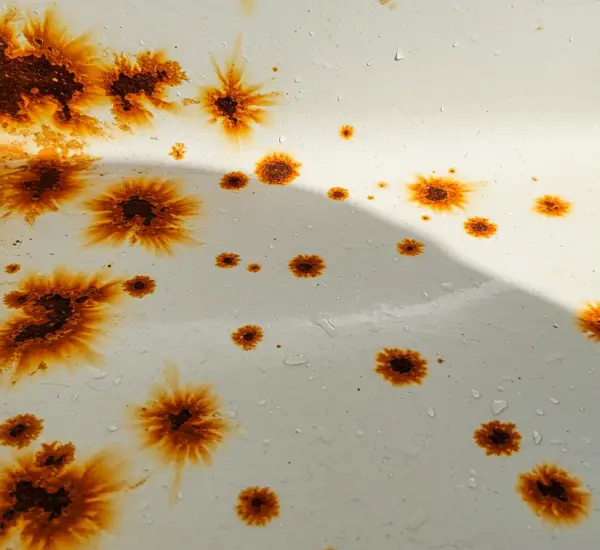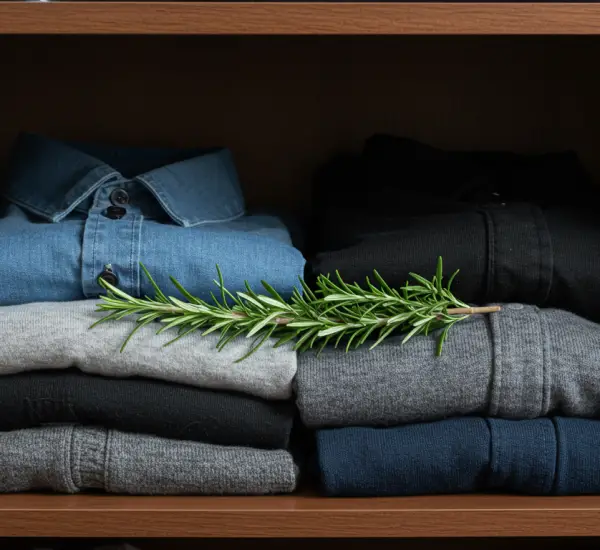You’ve probably noticed it before: your favorite T-shirt, still soft and perfectly fitted, suddenly develops tiny holes — usually around the lower front area. It’s a frustrating mystery that many people face, and it can make even new clothes look worn and old. But where do these small holes actually come from, and is there a way to stop them from appearing? Let’s take a closer look at the causes and what you can do to protect your clothes.
A Widespread Problem
Small holes in T-shirts are so common that many have jokingly referred to them as a kind of “fabric epidemic.” Ask around, and you’ll likely find that everyone has at least one shirt with the same issue. Some people even suspect that it’s a kind of “planned obsolescence” — a way for clothing manufacturers to make us replace our garments more often. In reality, though, the problem has more practical explanations.
These holes are not random. They tend to form in specific areas, especially around the waistband or near where the shirt rubs against jeans or belts. Understanding these causes can help you not only prevent them but also repair or minimize the damage when it happens.
The Most Common Causes of Small Holes in T-Shirts
1. Friction and Everyday Wear
The number one cause of small holes in T-shirts is friction. The bottom part of the shirt constantly rubs against belt buckles, jean buttons, or rough surfaces such as kitchen counters or desks. Over time, this repeated contact weakens the fabric fibers, causing them to break and form tiny holes.
Even sitting at a desk or counter with the edge pressing against your waist can accelerate the wear and tear. The friction acts on the same small area every time, so the fibers lose strength and give way — especially in thinner cotton fabrics.
2. Low-Quality Fabric
Fast fashion often means mass production at the expense of fabric quality. Many T-shirts today are made from lightweight, loosely woven cotton that feels soft at first but lacks durability. Lower-quality fibers and weaker weaving techniques make the material more prone to tearing, especially under stress from washing and daily movement.
If you notice that your shirts develop holes very quickly, it could simply be a sign of poor-quality fabric. Investing in slightly thicker, higher-grade cotton or blended materials can make a noticeable difference in longevity.
3. Washing Machine and Dryer Damage
Washing and drying are hard on fabrics, particularly delicate cotton. Rough washing cycles, high spin speeds, or overloading the drum can cause clothes to rub harshly against one another. Zippers, buttons, or hooks from other garments may snag the fabric, leading to those small, frustrating holes.
Dryers can also contribute if used excessively or at high heat. The constant tumbling and friction weaken the fibers, while heat can cause shrinkage and tension in the fabric. Over time, this stress makes the fabric more fragile and prone to tearing.
4. Detergents and Harsh Chemicals
Aggressive detergents or excessive use of bleach can damage the fibers, especially in natural fabrics like cotton. Strong cleaning agents break down the fabric’s elasticity, leaving it more brittle and less able to withstand friction or stretching. Even if the holes don’t appear immediately, the weakened fibers will fail sooner than expected.
5. Improper Handling
Twisting or wringing shirts too forcefully after washing — even by hand — can strain the fibers. What seems like a harmless squeeze may actually stretch and distort the threads. Later, when the shirt is worn or washed again, those weakened points can easily turn into holes.
Similarly, using clothespins or hangers incorrectly can cause small punctures or stress marks. When drying, especially for thin fabrics, it’s better to lay the garment flat on a drying rack to prevent pulling or stretching.
6. Insects and Moths
Though less common today, fabric pests such as clothes moths or carpet beetles can also be the culprits. These insects feed on natural fibers, particularly cotton and wool, leaving behind tiny holes. If you find multiple garments with small, irregular holes — especially if they’ve been stored for a while — it may be time to inspect your closet for signs of infestation.
How to Prevent Small Holes from Appearing
Now that we know the main causes, here are some practical ways to stop the problem before it starts.
1. Reduce Friction
- Avoid wearing belts or pants with sharp metal parts directly under delicate T-shirts.
- Tuck the shirt into your waistband, or wear a tank top underneath as a protective layer.
- When working in the kitchen or leaning against rough surfaces, wear an apron to protect the fabric.
2. Choose Higher-Quality T-Shirts
Investing in better-quality shirts is one of the easiest ways to extend their lifespan. Look for T-shirts made from combed or ring-spun cotton, which are smoother and more durable. Slightly heavier fabrics (around 180–200 g/m²) resist wear much better than ultra-light materials.
3. Wash with Care
- Turn T-shirts inside out before washing to protect the outer surface.
- Use a gentle cycle with cold or lukewarm water.
- Avoid washing them with jeans, zippers, or rough fabrics that can snag.
- Place delicate shirts in a mesh laundry bag for added protection.
When drying, opt for air drying whenever possible. If you must use a dryer, choose a low-heat setting and remove clothes promptly to minimize fiber stress.
4. Use Mild Detergents
Choose a detergent designed for delicate fabrics or baby clothes. These products are gentler on fibers and don’t contain harsh chemicals that can weaken the weave. Also, avoid overusing detergent — residue buildup can stiffen the fabric and make it more brittle over time.
5. Handle Wet Clothes Gently
After washing, gently squeeze out excess water instead of twisting or wringing. Lay the shirt flat on a towel, roll it up to absorb moisture, then let it dry horizontally. This method preserves the fabric’s shape and prevents stretching or tension along the seams.
6. Store Properly
Keep your closet clean and well-ventilated to discourage moths and insects. For long-term storage, wash garments first and place them in sealed fabric or cedar-lined bags — both are natural repellents against pests.
Can You Repair Small Holes?
If the hole is very small, you might be able to save your favorite shirt. A quick invisible stitch or a tiny embroidery can disguise the damage and even give the garment a new charm. For creative people, small embroidered designs or iron-on patches can turn a flaw into a fashion detail.
However, if the fabric around the hole feels thin or frayed, it’s best not to pull or stretch it — this could make the damage worse. In that case, consider repurposing the shirt for home wear or upcycling it into something new, like cleaning cloths or creative crafts.
The Bottom Line
Those tiny holes that mysteriously appear in T-shirts aren’t the result of bad luck — they’re the consequence of friction, wear, and sometimes poor care. With a few small changes in how you wear, wash, and handle your clothes, you can easily prevent them from forming in the first place.
Treat your favorite shirts gently, use mild detergents, and protect them from rough contact. And if a little hole does appear, don’t despair — a bit of creativity can give your garment a second life. With the right care, your T-shirts can stay looking new, comfortable, and hole-free for years to come.



